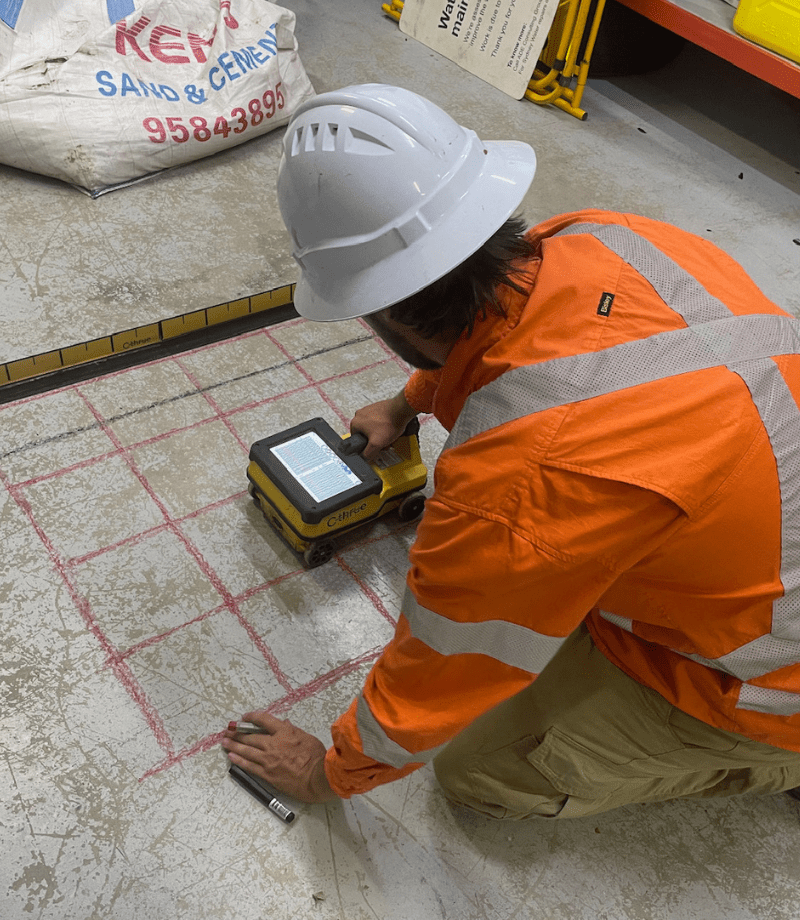Enhancing Job Planning and Execution Via Advanced Concrete Scanning Techniques
In the world of project planning and insight, implementation and precision are vital aspects that can make the difference between success and setbacks. Advanced concrete scanning strategies have emerged as an advanced tool established to elevate the standards of project management within the building sector.
Advantages of Advanced Concrete Scanning Methods

Improved Accuracy in Task Analyses
Enhancing job assessments via innovative concrete scanning methods considerably boosts the accuracy and dependability of construction analyses. By using cutting-edge scanning modern technologies such as ground-penetrating radar (GPR) and 3D imaging, job teams can currently obtain in-depth understandings right into the condition of concrete frameworks, determining prospective flaws or weak points that might not be noticeable to the nude eye. This improved degree of precision in job analyses allows building and construction experts to make even more informed choices regarding repair service and maintenance techniques, bring about enhanced overall job end results.
Furthermore, the raised accuracy in project analyses attained with advanced concrete scanning strategies helps in minimizing the risk of unpredicted concerns throughout the building and construction phase. By proactively detecting concealed abnormalities within concrete frameworks, such as rebar corrosion or voids, task teams can attend to these concerns early, staying clear of costly hold-ups and remodel later on in the job lifecycle. Inevitably, the boosted precision in task assessments helped with by advanced concrete scanning methods contributes to greater efficiency, cost-effectiveness, and quality in building tasks.
Very Early Recognition of Architectural Difficulties
Early detection of architectural obstacles plays an important function in guaranteeing the stability and security of concrete frameworks throughout the construction procedure. Recognizing possible problems at an onset allows for timely treatment, stopping expensive rework, routine hold-ups, and safety and security dangers. Advanced concrete scanning methods, such as ground-penetrating radar (GPR) and 3D imaging, allow project useful content groups to uncover covert issues, spaces, reinforcement format disparities, and various other anomalies that could endanger the structure's security.
By carrying out these methods during the planning and implementation phases, building and construction experts can proactively address architectural obstacles before they rise into significant problems. As an example, identifying insufficient concrete cover over support bars beforehand can avoid deterioration and structural weakening in the lengthy run - RainierGPR Service Areas. Moreover, determining variations in concrete density or density can help maximize product use and guarantee consistent strength homes throughout the framework
Ultimately, early recognition of structural difficulties via innovative concrete scanning not only improves the total quality and durability of the building yet additionally adds to a much safer constructed setting for individuals and residents.
Enhanced Precaution in Building And Construction
The implementation of durable security methods is necessary in the building and construction industry to alleviate risks and guard the wellness of workers and stakeholders. To improve safety and security measures, building and construction companies are progressively adopting technological improvements such as wearable devices that keep an eye on employees' important indications and identify potential health problems in real-time. By prioritizing security via the incorporation of sophisticated innovations and detailed training programs, building and construction tasks can significantly decrease accidents and create a protected working environment for all involved.
Streamlining Job Management Processes
To enhance operational efficiency and ensure task success in the construction industry, pop over here a concentrate on streamlining task monitoring procedures is essential. By executing efficient task monitoring procedures, building projects can minimize hold-ups, minimize costs, and improve total performance. One crucial aspect of improving project management is the usage of sophisticated technologies such click to find out more as Structure Information Modeling (BIM) software, which makes it possible for real-time cooperation, clash detection, and exact job scheduling. In addition, the adoption of cloud-based job administration systems enables for seamless communication among team participants, immediate access to project information, and the capacity to track development in real-time.

Verdict
Finally, the use of sophisticated concrete scanning techniques uses countless benefits for project preparation and execution. These techniques provide better precision in job evaluations, early recognition of architectural challenges, boosted precaution in building and construction, and streamlined project administration processes. Incorporating these approaches into task process can ultimately bring about a lot more successful and efficient results in building tasks.
Ultimately, the boosted accuracy in task evaluations helped with by innovative concrete scanning techniques adds to higher efficiency, cost-effectiveness, and high quality in construction jobs. RainierGPR Service Areas.
To maximize operational performance and make certain project success in the construction sector, a focus on simplifying task management procedures is important. By applying efficient job monitoring procedures, building tasks can reduce hold-ups, lower costs, and improve general performance. By enhancing project management processes with modern technology integration, clear communication, and data-driven methods, building and construction projects can achieve greater effectiveness, cost-effectiveness, and successful results.
These strategies provide improved accuracy in project assessments, early identification of structural challenges, boosted safety measures in construction, and streamlined project management processes.